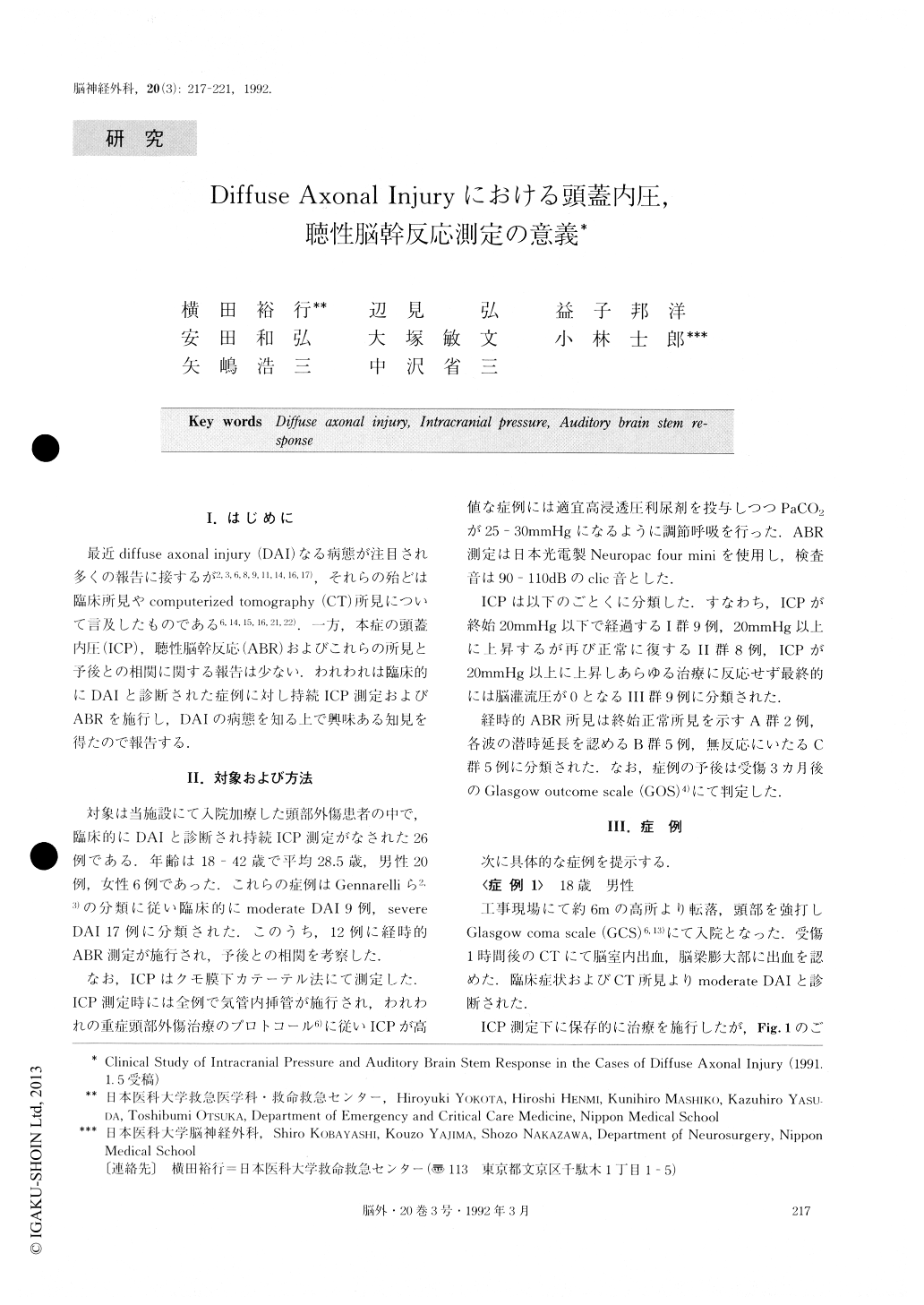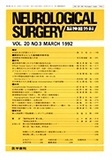Japanese
English
- 有料閲覧
- Abstract 文献概要
- 1ページ目 Look Inside
I.はじめに
最近diffuse axonal injury(DAI)なる病態が注目され多くの報告に接するが2,3,6,8,8,9,11,14,16,17),それらの殆どは臨床所見やco)mputerized tomography(CT)所見について言及したものである6,14,15,16,21,22).一方,本症の頭蓋内圧(ICP),聴性脳幹反応(ABR)およびこれらの所見と予後との相関に関する報告は少ない.われわれは臨床的にDAIと診断された症例に対し持続ICP測定およびABRを施行し,DAIの病態を知る上で興味ある知見を得たので報告する.
The course of intracranial pressure (ICP) and the finding of auditory brain stem response (ABR) was dis-cussed in the cases diagnosed as diffuse axonal injury (DAI) established by Gennarelli.
ICP was measured in twenty-six cases which were divided into three groups according to the course of ICP: Group (1), in which ICP remained below 20mmHg (group I, 9 cases). Group (2), in which ICP rose above 20mmHg but was controlled by therapy (group II, 8 cases). Group (3) , in which ICP rose above 20mmHg and could not be controlled by any therapies (group III, 9 cases). Glasgow outcome scale 3 months after the injury in the cases of group I and 11 was severe disability (SD) and/or persistent vegetative state (PVS), but all of the cases in group III died. The findings of serial ABR were divided into 3 groups. These were group A (2 cases) which showed normal record, group B (5 cases) which showed elonga-tion of latencies between the first and fifth waves, and group C (5 cases) in which there was no response in ABR. GOS in group A or B was SD and/or PVS, but all of the cases in group C were showen to he dead in GOS.
Our studies suggest that the level of ICP in DAI is rather higher than that published in previous reports, and the continuous measurements of ICP and serial re-cords of ABR are useful for evaluating the outcome of DAI.

Copyright © 1992, Igaku-Shoin Ltd. All rights reserved.


